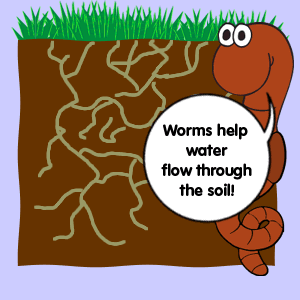The Buzz on North Carolina Worms
The 8-Second Trick For North Carolina Worms
Table of ContentsNorth Carolina Worms Fundamentals ExplainedThe 10-Minute Rule for North Carolina WormsThe 6-Minute Rule for North Carolina WormsIndicators on North Carolina Worms You Need To Know
Instance: 1-gallon of worm castings to 4 gallons of potting mix. Do NOT utilize a potting mix that has chemical plant foods in it. Read the labelit will certainly say. 1/2 mug in all-time low of the planting opening for smaller sized plants. 1 cup for bigger plants. ie. tomatoes, environment-friendly peppers, summer squash, and the like.
The addition of tea can additionally add increased microbial biomass to your dirt. You can always side-dress your plants with worm spreadings at any moment. Simply keep in mind, the microorganisms will certainly pass away if exposed to UV rays (Sun), so make certain to cover the spreadings with an inch approximately of dirt.
This baffled them for years up until the testing techniques ended up being much better. It would get far better(with more castings), degree off, and after that decline. As well lots of worm castings would speed up the development to a pace that the plant might not recuperate from.
North Carolina Worms Fundamentals Explained
I have stated the virtues of worm castings for about 2000 words. Worm spreadings are no various. It takes time to develop high quality worm castings.
Worm castings absolutely cost even more than chemical plant foods. Worm castings are on the less costly end of organic plant foods. (50 gallons per year) It is a much more challenging and very pricey investment to generate huge amounts of worm castings.

Creating a healthy and balanced dirt might be the biggest advantage of worm castings. We discussed worm castings NPK and additionally the appropriate nutrient evaluation that ought to use to worm castings.
Indicators on North Carolina Worms You Need To Know
We spoke about some of the downsides linked with worm castings. I covered a great deal of product in this write-up. There are a great deal of links (interior and outside). If you would certainly such as even more info on a particular topic, please click with the web links to read more. As always, feel totally free to comment or ask concerns.
The vertical burrows are usually open, although the worms top the top with residue and waste matter. Origins need oxygen for their growth, whereas they produce carbon dioxide that requires to leave the dirt.
Earthworms enhance porosity by two devices: (1) by developing long-term burrows, and (2) by enhancing soil gathering. Gathering is improved by the mixing of dirt and organic matter in the earthworms' intestines. North Carolina Worms. These very steady aggregates are transferred by some earthworms in their burrows, and by others at the surface of the dirt


In one more research study, earthworms were estimated to take in 4 to 10 percent of the top 6 inches of the soil yearly. Soil compaction decreases the porosity of the soil.
Little Known Facts About North Carolina Worms.
Typical earthworm populaces can quickly take in 2 lots of dry issue per acre annually, partly absorbing and blending it with soil. The importance of earthworms to blend surface residue with dirt ends up being very clear in dirts that do not have any type of earthworms. A lot of our Pennsylvania soils contend the very least some earthworms, and the effect of their full absence, for that reason, can not be kept in mind.
(https://direct-directory.com/gosearch.php?q=http%3A%2F%2Fwww.northcarolinaworms.com%2F&search-btn2.x=0&search-btn2.y=0)In these soils, the formation of topsoil with sensible raw material material did not occur, leading to bad crop growth. When the reason was established, the government of the Netherlands started a campaign to introduce earthworms. After the introduction of the earthworms, a dark topsoil layer was developed, and crop development enhanced significantly.
They live mostly from partially decomposed natural issue that is already incorporated in the dirt. These varieties ingest large quantities of dirt that they mix with absorbed plant residue in their intestines.
These species consume substantial quantities of soil that they blend with digested deposit in their digestive tracts. Their excrement is mostly deposited at the surface area of the soil.